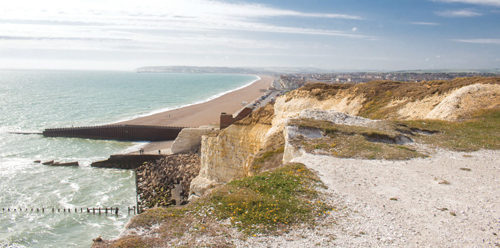
The last few months have undoubtedly seen a period of uncertainty during the run up to the election, and with the result leaving no overall majority, the prospect of a stable housing market looks even less likely. Rix & Kay’s Residential Property Team reflect on the state of the market in some key locations across Sussex.
What happened in the run up to the election?
Before the surprise result of the election in June, each party had set out its various housing policies. Theresa May’s manifesto set out plans for “a new generation of social housing”, which will return to the market after 10 to 15 years to be sold privately with an automatic right to buy. Labour on the other hand promised to build “at least 100,000 council and housing association homes a year for genuinely affordable rent or sale”.
The trouble was that neither of the main parties set out where the money would come from for new housing. The general sentiment was that the private sector alone would not be able to meet the UK’s housing demand.
How might the market react in the South East?
With Rix & Kay’s dedicated Residential Property team helping individuals and their families to buy and sell properties across Sussex and Kent for more than 75 years, there probably aren’t many other people who have a better understanding of the regional market variations across the South East.
The region is considered prosperous but the current stock shortage, coupled with political uncertainty is going to play its part. The latest house price index figures note a very small decline over the last three months and we’ve just begun two years of complex Brexit negotiations.
Brighton and the south coast
Brighton has always benefited from its easy access to the capital and even with the disastrous Southern rail strikes during the last 12 months, Londoners continue to migrate to the sea with the expectation of getting more for their money when it comes to buying property. It’s no surprise then that property prices continue to remain resilient following a period of rapid growth between 2014 and 2016.
Angela Arnold, who leads Rix & Kay’s team in Brighton and Hove believes the market will remain strong despite the outcome of the election.
“My team here in Brighton and Hove are seeing an increase in instructions, and if that is anything to go by, then the market appears buoyant and healthy. We’ve got great relationships with many of the most prominent agents in the city and, of course, that helps us. I do agree however that the Brighton market waited for the election to pass and I think it’s pretty clear that there is a shortage of stock right now. If anything, this only serves to create a bullish market and drive prices up. The figures support that, and central Brighton and Hove has out-performed many other regions in the South East with almost 8% growth during the last 12 months. Historically, the city has always been in a property bubble where prices are maintained even against the hardest climate.
The same can’t be said for some of the outlying areas of Brighton, perhaps places like Preston Park and Hassocks, that rely so heavily on the train services running as they should - they have suffered a little more when it comes to property prices holding their own.
It will be very interesting to see what the Conservatives prioritise outside of their main housing policies - transport, commerce and jobs all have a huge bearing on what the regional market might look like 12 months from now.”
Leon Mumford, who leads Rix & Kay’s team in Seaford agrees:
“According to HouseSimple, Seaford is one of the best performing areas along the main Southern rail routes for house prices. It benefits from being close to Brighton and has always had a great reputation as a place where you can get real value for money. Its demographic is slightly older than that of Brighton, and I think people here have a greater awareness of the potential impact that the result might have on the market. So in one sense, Seaford has seen an even greater period of cooling off since the snap election was announced. Overall though house prices in the town remain strong. We’ve not seen the huge increases of around 15% in 2015 but 2016 still grew by about 3%.”
Uckfield and MidSussex
The Weald is probably best known for its rural beauty which is epitomised by the Ashdown Forest. As an Area of Outstanding Natural Beauty and the largest area with public open access in the South East of England, the Forest has, inadvertently, created a huge challenge for any local housing strategy.
Charlotte Clarke, who lives locally and leads Rix & Kay’s team in Uckfield discusses the regional challenges:
“Wealden District Council is under immense pressure to find a solution to the local housing shortage. It’s been trying to find a workable answer for several years but the surrounding countryside and planning restrictions, not to mention the lack of infrastructure, makes that very hard indeed. Now we have had a general election, I can’t see anything changing in the near future unless something radical comes out of the narrow Conservative win.
Despite that, the Weald is a highly desirable place for people who want a real experience of the countryside, and this reflects the growing demand and house price increases over the last few years. In 2015, the average price of a detached house in Uckfield increased by a staggering 25%. That has slowed down somewhat but last year still enjoyed another 5% increase.
It might be that the political uncertainty curbs any further growth in the immediate future and there is also the impact of Brexit, particularly on rural business and agriculture, that has yet to be fully realised.”





